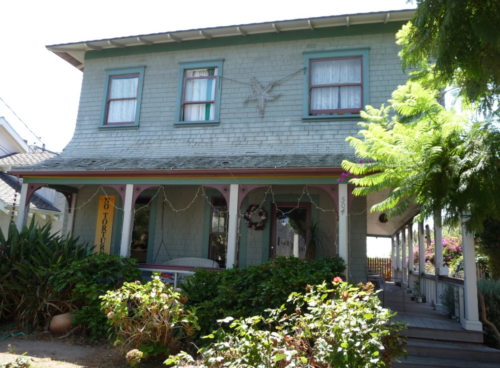E.J. Vawter House

- Known As
- American Foursquare
- Architect
- B.L. Balsey
- Built
- 1889
- Designated
- Sept. 8, 2014
Originally located in the vicinity of Fourth and Marine Streets, the Vawter House was moved to 504 Pier Avenue around 1907-08. Edwin J. Vawter, who was heavily involved in the development of Santa Monica and the Ocean Park neighborhood, settled with his family after relocating from Indiana in 1875.
The Vawter family was known for being the first in many things. W.D. Vawter, Edwin’s father, established Santa Monica’s first general store. He was also responsible for the early Santa Monica lumberyards and planning mill, which enabled the growth of Santa Monica. The Vawter family also established First National Bank in Santa Monica, where Edwin worked as a cashier.
The home, built circa 1889, was surrounded by carnation fields, leading Vawter, who, in addition to building the first street railway in 1886 with his family, was also the president of the City Water Company, to develop Santa Monica’s floral industry through his Ocean Park Floral Co. By 1905 Vawter had devoted 20 acres of his property to growing flowers. Vawter is credited with creating the first flower market in Downtown Los Angeles.
The Vawter House has many character-defining features of the American Foursquare style, including a low-pitched hipped roof, block massing, and a nearly square floor plan. The porch, though a 19th century wrap-around, is recessed along the west elevation by the extension of the second story over that section of the porch. This emphasizes the front portion of the porch in keeping with the American Foursquare style, which does not typically utilize the wrap-around porch.
Source:
- City Landmark Assessment and Evaluation Report, September 2014